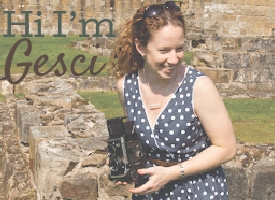Most of us have, at one point or another, played the deserted island game: "if you could only have 5 books/10 albums/4 toiletries etc. what would you take?" There's even a blog for people to submit photographs of the items they'd save in case of a fire. When we play this game there is an underlying somber note as we contemplate the loss of our worldly possessions, memories, and hard-work rewards. What doesn't exist when playing the game is the sense of urgency and panic, the actual desperation of having just seconds to decide what matters most in the world. One of the most powerful parts of our visit was seeing the remaining pieces of the lives left by the victims of Auschwitz/Birkenau. The pictures below don't do justice to the overwhelming feeling of standing in front of these treasures of the mundane life, but I hope that you, like me, begin to see the individual people behind the numbers.
Tallits, or Jewish prayer shawls. Often presented as a Bar Mitzvah (also at Bat Mitzvah for reform/conservative families) gift, it is both a religious item and a personal treasure. The Nazis and camp guards would, after confiscating them, use them as blankets and rags, desecrating their meaning.
Prostheses of victims. Our guide made reference to the "cleansing" of disabled and otherwise "inferior" non-Jews, as the "master Aryan race" would not include these "undesirable" people. I am assuming these prostheses are from victims of the specific camps Auschwitz and Birkenau.
Cooking pots and pans brought by the victims. These items, as simple household tools, give witness to the belief that the victims were only being relocated, similar to their forced moves to Ghettos. Each person was allowed one suitcase, so for them to dedicate space to a pot or bowl showed firm belief in a future need to use that item.
Some more everyday, often taken for granted items. I wondered here if the person who brought this grater really loved cheese, like I do.
The suitcases that held the worldly belongings of their owners. Victims wrote their names and birthdates on the luggage when they were told to leave it at the disembarking point, so they could identify it later when they assumed they would recollect it. Hana Fuchs, the young girl whose case is lower center, was an orphan, according to her designation of "waisenkind". Please also note the Apothecary bag to the top right- dedicated medical professionals brought medications and tools to help people, but these were confiscated alongside everything else.
Shoes. Thousands of shoes. Most shoes had grommets and rivets removed, for melting down and using the metals. Higher quality shoes were sent to Germany alongside the better clothing, for the use of the people living there. Shoes were also searched, as some victims hid valuables or medication in the soles.
This covering shelters items found near the registration building, Canada II, gas chambers, and crematoriums at Birkenau. Items are still found in the ground by staff and visitors, and are left to the side of this covering to be added to it later.
These are more valuable items, the jewelry, coins, candlesticks, and pocket watch. If you look to the center, you'll notice a set of keys- as our guide said, this person must have carefully locked up their home, expecting to return one day and need their housekeys to unlock the door.
More items: shaving brushes, small metal boxes, and photographs.
What would you bring?





















No comments:
Post a Comment
Thanks so much for stopping by! I can't wait to read your comment!